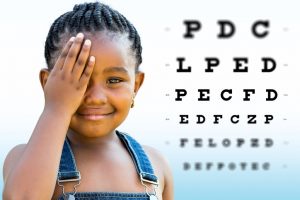Neonatal and Infant Screening as a Fundamental Procedure
Pediatric Care plays a vital role in the life of our children. Part of pediatric care is first Neonatal then Infant Screening. This should be done from age zero of a child so as to thoroughly detect abnormalities not only in the physical but genetic diseases as well. Through these procedures or tests, early detection of a child’s deficiencies can help prevent deformities and also can Save a Life. This will also help doctors in addressing the most critical problem of the child and dissect results in order to give correct diagnosis.
EYE Screening
 Our eyes are the window of our soul. A baby can only first see just a light, second colors, and then third faces. It is how important the eyes are. It is one of the most sensitive and critical part of an infant and it should be given a priority through eye screening. Eye specialists use new technologies to detect eye problems especially in infants who are observed to have difficulties in focusing on something and are easily agitated by too much light. Eye screening can detect genetic or acquired form of eye disease.
Our eyes are the window of our soul. A baby can only first see just a light, second colors, and then third faces. It is how important the eyes are. It is one of the most sensitive and critical part of an infant and it should be given a priority through eye screening. Eye specialists use new technologies to detect eye problems especially in infants who are observed to have difficulties in focusing on something and are easily agitated by too much light. Eye screening can detect genetic or acquired form of eye disease.
Retinoblastoma (Rb) in Children
One type of eye disease is Retinoblastoma. This is a rare disease mostly occur in children ages 2 years old and below and it is commonly known as Pediatric Retinoblastoma. It is where a cancer cell is progressively mutating to kill the healthy cells which develops into a tumor in the retina and will spread further on other parts of the body like the brain, spine, skull, and bone marrow.
Can Retinoblastoma be treated?
Retinoblastoma is treatable but is dependent on how early the cancer is detected. Also, the parents play a very important role in communicating to their doctor or specialist of all family histories and backgrounds especially if the same happened to a relative or a member of the family. If it is already a genetic disease they suspect to be passed-on to their child, early screening like Prenatal Screening for retinoblastoma is done with the parent’s approval of the test. This is a very sensitive kind of test so if the parents decided to discard this option they are advised to do Newborn screening immediately after giving birth. This is to check if gene mutation is inherited by their child and also to monitor the progression of the disease. Regular eye check-ups is then necessary especially if it is a hereditary type of retinoblastoma.
Forms of Retinoblastoma
There are two forms of Retinoblastoma: Heritable and Non-heritable.
Heritable retinoblastoma is when there is a family history that the disease already occurred. Second, if there is a mutation or change in the RB1 gene. In this form, a tumor maybe developed not only in one eye or both eyes are affected.
Non-heritable retinoblastoma developed much later in the child’s life compared with a child that has a heritable form of retinoblastoma. Most cases occur when the child ages 5 years old and below. This is caused by an isolated genetic mutation in which both parents don’t have the said gene. The cancer appears only in one eye of the patient and if treated earlier, have a higher chance of recovery and non-occurrence of the cancer. Physicians still don’t know the cause of a non-heritable retinoblastoma that develops to children.
Treatment for Retinoblastoma
Retinoblastoma treatment is a journey, not only to the child but to the parents as well. There are different ways in treating retinoblastoma. It depends on what stage the prognosis of the doctor is and what type of treatment should the child undergo. Here are some of the tests available for the parents to choose from:
- Eye Screening & Eye Examinations
- MRI (Magnetic Resonance Imaging)
- CT (Computerized Tomography) Scan
- RB1 Gene Test
- Ultrasound Exam of the Eye
- Fluorescein Angiography
- Fine Needle Biopsy
- Cytogenetics and Gene Expression Profiling
- Tests for Metastases
- Chemotherapy
- Focal Therapy
Continuous tests and examinations should be done even after a child undergoes a therapy and was cleared by the doctor since there is a tendency for the cancer to recur. Parents should be very observant of the symptoms of retinoblastoma or other types of cancer in order to address the child’s concerns or to ease the pain or discomforts they feel as early as possible.
Saving a child’s Eyesight
Saving the child’s eye or both eyes have a great impact on his/her life. It’s like giving back a life that was lost and now can see clearly the beauty that it can give. Not only because of what science offered to cure them but with the help of their parent’s understanding, perseverance, and who stand by their side all throughout the ordeals their young bodies have to go through. Coping up is not easy, but a child who felt the care and love their parents provides for them is enough to hang on to life. Especially if a child is looking through a clear and new set of EYES, he/she then realizes how valuable life is and how it is more beautiful, much happier, and more exciting to live on.

















